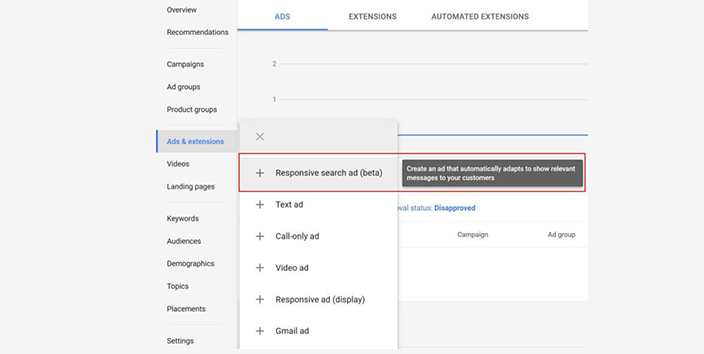The development team at Google AdWords seems to be coming up with new and exciting updates for its beta version of responsive test ads. In the most recent update, advertisers are now allowed to provide more than one headline for an ad. The new ad format is in sync with the proliferation of machine learning and hence offers more space for advertisers to build their headline.
As many marketers would have seen – once they use the standard dynamic ads, they will start seeing recommended responsive ads built into their dynamic campaigns. With the dynamic nature, Google Machine Learning algorithm takes over to serve the most relevant ad likely to generate the best possible ROI on the advertising costs.
Responsive ads are introduced to improve the overall efficacy of dynamic remarketing campaigns. It has the capability to automatically adjust to a banner ad or a dynamic text ad based on the available ad real estate.
The changes in the new ad format
As a part of Google initiative to let machine learning to optimise ads, it has added a slew of measures in place since last year. Be it getting rid of manual A/B testing, dynamic search ads, or automated ad rotation optimisation; there are quite a few initiatives taken by Google in this regard.
The rationale behind multiple ads is simple – your group gets to participate in a higher volume of ad auctions. This is applicable when there are more options for the keywords to deliver the ads. Additionally, it means handing over more control from the humans to the AI-based computer systems. All these updates point to one key effect – manual A/B testing will no longer be as effective as it was before.
The two key changes to the headlines in responsive ads are as below:
1. Show a max of three headlines in place of the current two headlines
2. Show a max of two descriptions (90 alphabets) in place of the current one description (max 80 alphabets)
Best practices for writing effective headlines
1 – Advertisers can integrate a maximum of 15 headlines plus 4 descriptions. With this, advertisers need to add different flavours and varieties – all leading ultimately to the singular goal of achieving brand visibility
2 – You need to provide different headlines and descriptions – such as varying between the headlines on product USP, value propositions, benefits, call to action, and features.
3 – Remember to follow the current guidelines of writing headlines that are relevant to the keywords and having at least one keyword present in the headline
4 – Use ‘pinning’ option when dealing with sensitive categories. Make sure to pin more than one headline and description to make the dynamic matching more effective.
5 – Make use of the ad type column in the reporting metrics view. Under this, you can filter results for only responsive search ads. This will allow you to see the performance of the dynamic ads served by Google machine learning algorithm working in the background.
What are your thoughts on the new updates to responsive ads on Google AdWords? Do write to us and let us know.






